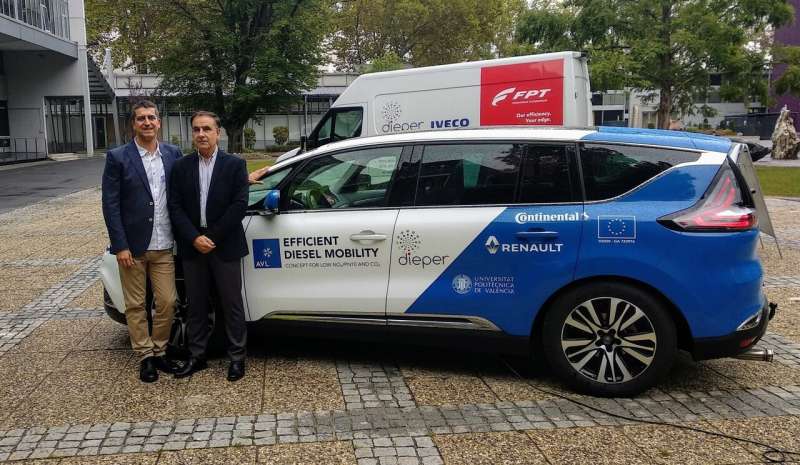Credit: Valencia’s Polytechnic University
Researchers from Valencia's Polytechnic University (UPV) have taken part in the development of a new engine that has low consumption and high efficiency, and which decreases the emissions of contaminating particles by over 80 percent compared to current legal limits.
"The objective of the project was to search for the optimal combination of innovative and real solutions that could be available in the short term, thus integrating new technologies that make it possible to face the new challenges of road mobility," says Jesús Benajes, professor and researcher at the CMT Institute, and coordinator of the part of the project linked to the thermal-fluidodynamic processes inside the engine.
Decrease in contaminating particles
The final meeting of the project took place in Graz (Austria) during the last week of this past September. In the meeting, two demonstrator vehicles were presented: one that will represent the future D and E classes for passenger transportation, and another light commercial vehicle destined to transporting goods.
"Equipped with the motor developed in the framework of the project, they both confirm the good results of the research we have conducted, both as regards fuel and the decrease in particles smaller than 23 nanometres that are emitted by the exhaust pipe," explains Benajes.
The key to obtaining an engine with these characteristics, as the researcher adds, lies in the use of variable compression relations, an improvement of thermal management and the development of new particle filters. "They are solutions that are available today to be integrated in the engines that will equip future medium and large-sized cars, as well as light commercial vehicles or vans," says Benajes.
Consumption and emissions during real driving
In the framework of the project, Jaime Martín, professor and researcher at the CMT, has been in charge of reproducing the behaviour of the engine with computer-generated simulations.
"One of the main challenges—explains Martín—is to optimise the functioning of all the engine's systems in different driving situations. The post-treatment systems that decrease emissions are very sensitive, for example, to the temperature of exhaust gases, which varies greatly when driving in a city or on the motorway. We must ensure an optimal functioning of all the devices on any road, in any weather conditions and regardless of the type of driving."
Provided by Asociacion RUVID
























